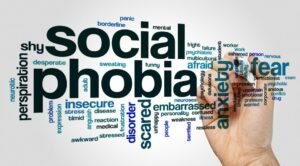Persistent Depressive Disorder (Dysthymia) 300.4 (F34.1)
Information related to Persistent Depressive Disorder (Dysthymia) as well as the specific symptoms follow below. While some of these Persistent Depressive Disorder (Dysthymia) symptoms may be recognized by family, teachers, legal and medical professionals, and others, only properly trained mental health professionals (psychologists, psychiatrists, professional counselors etc.) can or should even attempt to make a mental health diagnosis. A multitude of factors are considered in addition to the psychological symptoms in making a proper diagnosis, including medical and psychological testing considerations. This information is for information purposes only and should never replace the judgment and comprehensive assessment of a trained mental health clinician.
Persistent Depressive Disorder (Dysthymia) diagnostic criteria 300.4 (F34.1):
This disorder represents a consolidation of DSM-4-defined Chronic Major Depressive Disorder and Dysthymic Disorder.
A. Depressed mood for most of the day, for more days than not, is indicated by either subjective account or observation by others, for at least two years.
Note: In children and adolescents, mood can be irritable and duration must be at least one year.
B. Presence, while depressed, of two (or more) of the following:
1. Poor appetite or overeating.
2. Insomnia or hypersomnia.
3. Low energy or fatigue.
4. Low self-esteem.
5. Poor concentration or difficulty making decisions.
6. Feelings of hopelessness.
C. During the two-year period (1 year for children or adolescents) of the disturbance, individual has never been without the symptoms in criteria A and B for more than two months at a time.
D. Criteria for a major depressive disorder may be continuously present for two years.
E. There has never been a manic episode or hypomanic episode and criteria have never been met for cyclothymic disorder.
F. The disturbance is not better explained by persistent schizoaffective disorder, schizophrenia, delusional disorder, or other specified or unspecified schizophrenia spectrum and other psychotic disorder.
G. The symptoms are not attributable to the physiological effects of a substance such as a drug of abuse, a medication, or another medical condition such as hypothyroidism.
H. The symptoms cause clinically significant distress or impairment in social, occupational, or other important areas of functioning.
Note: Because the criteria for major depressive episode include four symptoms that are absent from the symptom list for persistent depressive disorder (dysthymia), a very limited number of individuals will have depressive symptoms that have persisted longer than two years but will not meet criteria for persistent depressive disorder. If the full criteria for major depressive episode have been met at some point during the current episode of illness, they should be given a diagnosis of major depressive disorder. Otherwise, a diagnosis of other specified depressive disorder or unspecified depressive disorder is warranted.
Specify if:
With anxious distress
With mixed features
With melancholic features
With atypical features
With mood-congruent psychotic features
With mood-incongruent psychotic features
With peripartum onset
Specify if:
In partial remission
In full remission
Specify if:
Early onset: If onset is before age 21 years.
Late onset: If onset is at 21 years or older.
Specify if: (For most recent two years of persistent depressive disorder):
With pure dysthymic syndrome: Full criteria for a major depressive episode have not been met in at least the preceding two years.
With persistent major depressive episode: Full criteria for major depressive episode have been met throughout the preceding two-year period.
With intermittent major depressive episodes, with current episode: Full criteria for major depressive episode are currently met, but there have been periods of at least eight weeks in at least the preceding two years with symptoms below the threshold for a full major depressive episode.
With intermittent major depressive episodes, without current episode: Full criteria for a major depressive episode are not currently met, but there has been one or more major depressive episodes in at least the preceding two years.
Specify current severity:
Mild
Moderate
Severe
Adapted by Paul Susic Ph.D. Licensed Psychologist from the Diagnostic and Statistical Manual of Mental Disorders Fifth Edition (DSM-5) American Psychiatric Association




